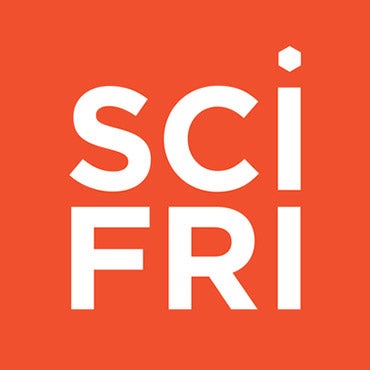Planets aplenty
ListenWith 8 exoplanet confirmations this week NASA’s Kepler Space Observatory has identified over 1,000 exoplanets planets orbiting other stars. Confirmations this week were of ‘earthlike’ planets in their star’s habitable zone. The probe is specially designed to identify earth-like planets although these are the harder ones to pull out of the data and confirm. There are numerous examples of planet situations that have never been observed before: planets orbiting two stars, planet orbiting a planetary nebula, planets in star clusters, etc. Venus and Mercury in the evenings this week right after sunset low in the SW – too late to catch them tonight but start tomorrow evening right after sunset. Jupiter is above the eastern horizon by 7:30 – wait til later – 10- to see it high enough. 4 to 6 am in the East Friday morning, the moon right next to Saturn both in the head stars of Scorpius!
January 12, 2015
[Dave Heller] Since its launch almost 6 years ago, NASA’s Kepler Space Observatory has identified planets aplenty in our Milky Way galaxy. Let’s get down to Earth on NewsWorks Tonight with Derrick Pitts, chief astronomer at the Franklin Institute. Derrick, I understand it crossed a new milestone in terms of number of new planets identified.
[Derrick Pitts] Out of 3,000 candidates for planets, 1,004 have been confirmed by astronomers as actual planets that Kepler has discovered orbiting other stars. The upshot of this though is that the other 3,200 planets that have been identified. Astronomers believe that 90% of those will be confirmed as actual planets.
Pretty good sleuthing. Review how a planet is identified orbiting a star very, very far away.
It’s done very, very, very, very carefully with extraordinarily precise instrumentation. What Kepler is doing is from its orbit around the sun, it’s observing 150,000 stars in a section of our galaxy near the constellation Cygnus the Swan about 3,000 lightyears away. In order to do this, the telescope on board the spacecraft looks at the change in light output from those candidate stars and determines over a number of observations which of those stars seems to show a pattern of light output change that indicates the presence of an object orbiting that star.
I understand from some of this observation work there are very unusual types of configurations as well.
What Kepler has been able to identify is really oddball things, things we never imagined could possibly be. For example, a planet orbiting the remains of a star that has exploded at the end of its life creating a planetary nebula, a large batch of gas and dust. We’ve also seen a number of examples of planets orbiting multiple stars. So back in the days of the first Star Wars movie, when Luke Skywalker is standing on the planet Tatoween looking at the double sunset, this was complete fantasy. But nowadays, we’ve easily seen a number of these situations where one planet orbits more than one star, typically two, but we’ve now found that to be a real situation.
Is it orbiting external to both those stars, or does it do a figure 8 among them?
Orbiting external to both, there’s enough tidal stuff going on between those two stars as they orbit a common point themselves. But we’ve also seen examples of planets within star clusters — another unusual situation we’ve never expected to see.
The unusual is certainly intriguing, but of course mankind hungers for the usual. So how many of these planets are relatively Earth-size, rocky, orbiting stars that are sunlike?
Well, it’s an interesting question because when we use the term Earth-like — planets that are like Earth orbiting stars — we have to add a couple of caveats to that. One of them is that the planet’s at the correct distance from the star to be, called the habitable zone, the place where water can exist as a liquid on the planet. Then the other part we have to think about is how large is the planet, how massive is the planet? And what we found is that we’re finding many, many more Super-Earths — planets that are much larger, much greater mass than the Earth, even though they may be rocky bodies and some of them even with atmospheres. But still the difference in mass doesn’t make them Earth-like. We’ve also found instances of planets that seem to be Earth like but are much closer to their stars, so they’re not in a habitable zone. However, we have been able to find actually quite a number of planets that seem to be in their stars habitable zone, that seem to be rocky, and are closer to the mass of our planet than others. So we found objects that are one third larger than Earth, for example, and that’s the closest we’ve come so far.
When does the warranty expire on Kepler?
Well, actually Kepler’s life has been extended. It’s been extended by two years by NASA for another set of observations to be done. Even though Kepler is a little bit hobbled technically, because it no longer has the capability to accurately target itself, its fine, precise targeting mechanism failed last year. So now it’s still doing good science, still has plenty of life, and even after this two year period, there’s some consideration that NASA might extend its mission two years more. There’s plenty of work for graduate students to do going forward into the next several decades easily.
And for Earthlings looking to do good, observable science, what’s available to be seen in the night sky this week?
Really beautiful stuff. Venus and Mercury cavort over in the southwest just after sunset. But just a few hours later over on the eastern horizon around 7:30, Jupiter has come up above the horizon. If you wait until 10 p.m., it’ll be high enough for a really good view. For folks that are up really early in the morning, there’s a really beautiful thing to see on Friday morning this week and that is Saturn and the moon, very close together, just before sunrise, over in the east, around 6 a.m. And you’ll see them not far from the stars of the constellation Scorpios the Scorpion, a summer constellation you can see in the winter in the early morning.
I knew summer was drawing near.
It’s coming, it’s coming.
WHYY is your source for fact-based, in-depth journalism and information. As a nonprofit organization, we rely on financial support from readers like you. Please give today.




